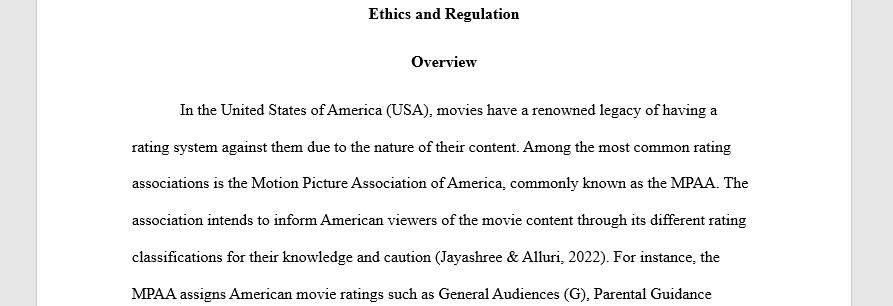Ethics and Regulation
Overview
We’re constantly surrounded by visual media. This course has focused on various ways to analyze the elements, the context, and the intent. But, to truly evaluate any form of visual media, we must also consider why we see that content and why we don’t see other content.
That last part can be tricky. It involves ethics as they pertain to the parts of the world where the content is created and distributed. It also involves media regulation, which determines what should or shouldn’t be allowed to be broadcast on television, radio, and the Internet. This is region-specific, meaning governmental organizations around the world handle things differently.
Rating systems, labels, and disclaimers accompany much of the media we consume. We see these in the form of messages on the screen about violent or sexual content, a movie rating (G, PG-13, R, NC-17), or a label on a video game or album about explicit lyrics, themes, or scenes. Even bookstores and libraries may section off certain materials to make it clear that they’re intended for certain audiences only. These ratings, determined by regulatory bodies, are designed to restrict who can or should be exposed to the content. But, ultimately, it’s up to oneself or one’s guardians.
Directions:
Thinking solely about the United States, identify one form of visual media that has a rating system, label, or disclaimer about its content. For the purposes of this discussion forum, the form of visual media you want to discuss can be on television, streaming, the Internet, social media, print materials, or advertisements of any kind. Don’t discuss radio, music, podcasts, or other non-visual media.
- Explain whether you think these regulatory efforts are successful in restricting access?
- What does research show about the effects of these regulatory efforts?
Answer preview for Ethics and Regulation

APA
346 Words
